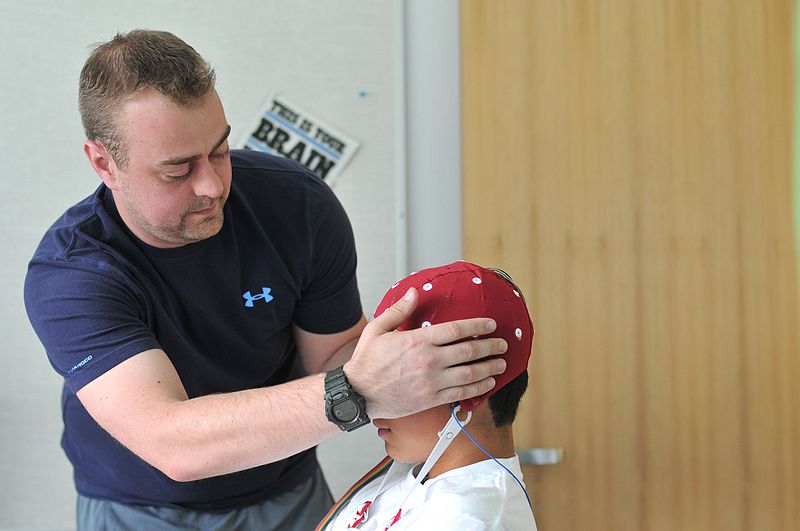By Rick Lytle, staff writer
Seven years ago, one of the most beloved members of the 1985 Super Bowl champion Chicago Bears, took his own life. After months of struggling with his deteriorating mental health, he ended his own life with a bullet to the chest. He wanted to save his brain for research, and was found to have Chronic Traumatic Encephalopathy, or CTE.
Seven years later, two of his former teammates, his son, and State Representative from the 59th District Carol Sente introduced the Dave Duerson Act, a proposal to ban tackle football under the age of 12 in Illinois. The two teammates were Mike Adamle, who has been diagnosed with CTE, and Otis Wilson, a teammate of Duerson on the 1985 Bears.
Many supporters of the act believe playing tackle football at a young age is simply unnecessary. At the Jan. 25 news conference, Concussion Legacy Foundation CEO and co-founder Dr. Chris Nowinski pointed to research showing the correlation between the length of a career and the likelihood of developing CTE.
“A child’s brain goes through significant changes as they become an adolescent between the ages of 8 and 12,” Nowinski said at the Jan 25. press conference. “We have research now to say playing football during those years increases your risk as an adult of having problems with cognition, severe depression, and behavioral issues.” Nowinski played football at Hersey High School and Harvard University.
Former Prospect head football coach Mike Sebestyen agrees that it is unnecessary to play tackle football at such a young age.
“Some of the best football players I’ve ever dealt with didn’t play tackle football until high school,” Sebestyen said.
Sebestyen says that at the youth football level, the majority of players are just good because of their size. According to Sebestyen, by the senior year of high school, you can’t even tell which players started at 5 years old, or freshman year.
Others, like Chicagoland Youth Football League president Geoff Meyer, don’t believe worrying about the length of careers is important. In an interview with the Chicago Tribune, Meyer claims that the majority of youth football players don’t even reach the varsity level. He’s echoing a point made by many against the bill. They agree it is scary to hear numbers like 110 out of 111 former NFL players whose brains were studied after death, were diagnosed with CTE. However, opponents of the bill reiterate that the majority of youth athletes won’t make it nearly that far in their football career.
Another argument that some make against the legislation acknowledges the potential hazards, but argues that the benefits of tackle football outweigh the risks. The Chicagoland area Bill George Youth Football League president Jerry Miller believes the life lessons learned outweigh the potential negatives.
“The biggest impact is learning team skills, leadership skills, and accountability for your actions,” Miller said.
When talking about “city kids who live for this sport,” Miller had a very strong message.
“Now you’re going to put them on the street corner, where they could be doing nothing, and get shot and killed. They don’t want to pay any attention to that,” Miller said.
Bill George Youth Football League numbers are noticeably down. The league had 200 teams 5 years ago, but is now down to only 160, a 25% decline. This is a trend that has been seen across all levels of football. Illinois had over 51,000 high school football players in 2007. In 2016, that number has dropped to 42,682.
Even if Sebestyen doesn’t believe playing football is necessary at a young age, he doesn’t believe that is a decision that should be made by the government.
“I don’t know that I agree with the fact that there’s a legislative attempt to teach me how to parent,” Sebestyen said.
He will not allow his own children to play youth tackle football because of scientific research regarding concussions, but Sebestyen doesn’t think his decision should be imposed on another family. He would let him play in high school, but his son hasn’t shown any interest.
Sente doesn’t think there is any time to wait, or allow parents to decide.
“In public safety, sometimes with issues of how much government should get involved, some people will take the side that you have to prove this 100 percent before you stop,” she said in an interview with the Chicago Tribune. “My feeling is these are children’s lives. … There are important changes that have happened, but I do not think the changes are enough.”
Categories:
New law could eliminate youth tackle football in Illinois
March 1, 2018
0
Donate to ProspectorNow
This coming fall, we plan on traveling to the 2025 National High School Journalism Convention in Nashville, Tennessee, where we'll learn from professionals and get better at what we do: making the best multimedia student journalism in the state. If you've ever found anything of worth on this website, please consider donating to offset the cost.





































































